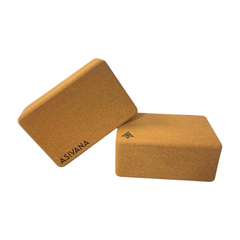Apas (Water, Fluidity)
Jack UtermoehlShare
Apas is a Sanskrit term meaning "water," representing the principle of fluidity, emotion, purification, and adaptability.
As one of the five great elements (pancha mahabhutas), Apas governs the flow of life—both physically and emotionally.
It embodies the qualities of softness, nourishment, cohesion, and the power to adapt, cleanse, and connect.
In yogic and Ayurvedic philosophy, water is the essence of emotional depth and intuitive intelligence.
Etymology and Meaning
Sanskrit Spelling: आपः
Root Word: "Ap" (water, flow)
Translation Variations: Water, fluid essence, purifier, emotional field
Pronunciation: Apas [AH-pahs]
Apas symbolizes the emotional and energetic undercurrents of life. Just as water shapes the land over time, this element speaks to transformation through flow rather than force.
Apas in Yogic and Ayurvedic Philosophy
Apas plays a vital role in both health and spiritual awareness:
In Ayurveda: Apas governs all bodily fluids—plasma, lymph, tears, saliva, and reproductive fluids. It helps regulate temperature, hydration, and nourishment.
In Yoga: Apas is associated with the sacral chakra (svadhisthana), the energy center that governs emotion, sensuality, creativity, and the ability to let go.
In Subtle Practices: Apas is connected to emotional release, compassion, and the capacity to move through change with grace.
Symbolism and Elements
Color: Silver, white, or soft blue, representing fluidity and calm
Element: Water—cool, nourishing, cleansing, and adaptable
Mantra: Vam, the bija (seed) sound of the sacral chakra, connected to flow and creativity
Mudra: Jala Mudra, a hand gesture that supports hydration, emotional balance, and fluidity
Yoga Essentials for Your Practice
Support your yoga journey with high-quality, sustainable props designed for comfort and stability.

Crafted from eco-friendly cork for durability and a comfortable practice.
$24
Shop Now
Includes everything you need to get started: a mat, blocks, and a yoga strap.
$120
Shop NowPractical Application
In Yoga Practice
- Include hip-opening poses like Pigeon Pose (Eka Pada Rajakapotasana) or Bound Angle (Baddha Konasana) to awaken Apas energy
- Use flowing sequences like moon salutations or full moon sequences to embody movement and adaptability
- Incorporate breathwork that emphasizes gentle, rhythmic flow (e.g., Chandra Bhedana or Ocean Breath)
In Daily Life
- Drink plenty of clean water and nourish your body with hydrating foods
- Process emotions through journaling, creative expression, or mindful conversation
- Allow space for rest and movement—supporting both stillness and circulation
Quotes and Wisdom
"Be like water—gentle, flexible, yet powerful enough to carve through stone."
"Water teaches us to flow with life, not resist it."
Modern Relevance
In an era of emotional repression and overstimulation, Apas reminds us to feel, to flow, and to release.
Whether dealing with stress, creative blocks, or emotional stagnation, working with the water element restores balance, empathy, and resilience.
It teaches us that movement doesn’t always mean force—it can also mean surrender and grace.
Related Concepts
Svadhisthana Chakra: The seat of emotional energy, creativity, and flow
Vinyasa: A style of yoga that mirrors the qualities of Apas through conscious, fluid movement
Jala Tattva: The elemental principle of water in tantric and yogic systems
How to Work with Apas
Mindset: Embrace emotional intelligence and adaptability
Actions: Move gently, breathe fluidly, hydrate well, and honor your emotional tides
Reflection: Ask, “Where am I resisting flow? What wants to be felt and released?”
Suggested Reading
- The Heart of Yoga by T.K.V. Desikachar
- The Language of Emotions by Karla McLaren
- Prakriti: Your Ayurvedic Constitution by Dr. Robert Svoboda
Conclusion
Apas, the element of water, is the source of emotional wisdom, adaptability, and healing. It reminds us to soften, to feel, and to trust the currents of life.
Through movement, breath, and presence, we honor this sacred element and return to balance.






